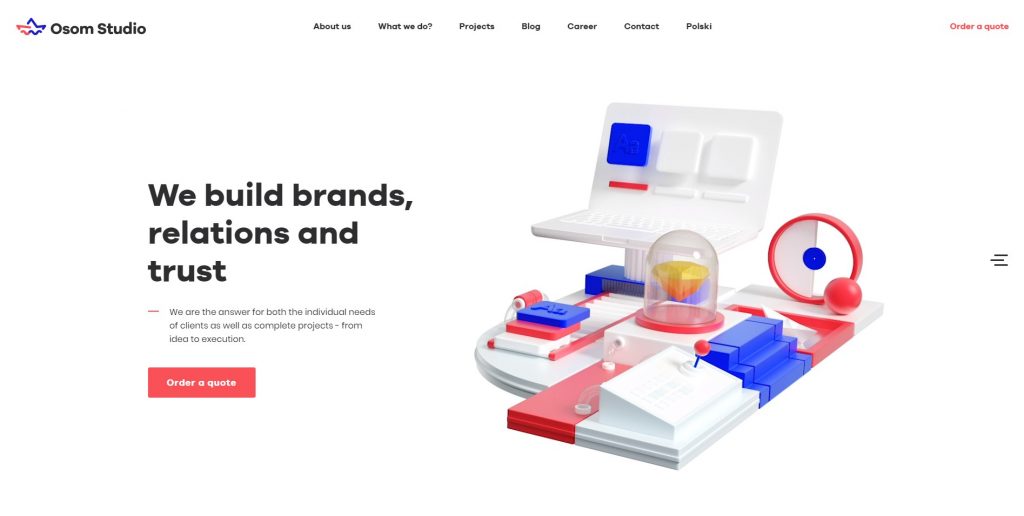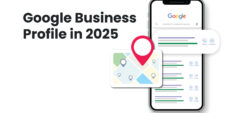What is bounce rate?
Imagine yourself wandering down the streets and all of a sudden you remember you need a new pair of shoes. You enter the store, have a quick look at one pair of shoes and leave the store right away.
If Google analyzed your behavior, it would say you “bounced”. What was the reason for such behavior?
Maybe the staff wasn’t polite or maybe you didn’t like the wall and ceiling paint. Whatever the reason may be, the point is you left without looking at the other products.
This exact same thing may be happening to your website and it’s usually shown by a very high bounce rate.
But still, what is the bounce rate?
Bounce rate is the percentage of total sessions by customers/visitors who left your website after seeing just one of your pages (same as leaving the shoe store after seeing just one pair of shoes, right?) and its numbers may vary but you can say you have a high bounce rate if it’s over 80%.
A high bounce rate is an indicator that tells you that something is wrong with your approach or your strategy and that you need to change it because it’s clear your clients are not satisfied with your content.
In further text read about the ways of reducing the bounce rate.
How to reduce bounce rate?
Luckily for you, there are numerous ways of reducing a high bounce rate, and I will present them in the following text. We are just warming up, stay tuned.
1. User experience improvement to reduce bounce rate
First of all, you need to work on the “User experience” aspect. You need to make your users feel comfortable when they are on your website.
Good user experience is when their all-embracing feeling of your website is positive, when not only they find your site easy to use, but also amusing and attractive.
You need to make sure your website is looking amazing on all possible devices and platforms and you need to monitor your client’s behavior and what’s that “thing” that makes them make decisions the way they do.
That way you will reduce your bounce rate and make more conversions.
2. Readability improvement
One of the reasons your clients are leaving your website after just one page may lay in the readability of your content. So, the next step in reducing your bounce rate is making your articles, and generally your whole website, easy to read.
Particularly, large paragraphs of text are something that scares people away like they’ve seen a ghost. And if you combine large chunks of text with some awful formatting then the bounce rate will be off the charts.

You need to choose your font style, size, and color carefully so that your text is easily readable on all devices. Besides font, you have to take care of your page formatting as well, so that your text looks appealing to the eye. There should be enough space between the lines.
Alongside headings, you should use a lot of subheadings and bulleted lists, and the margins should be well adjusted in order for your page to look fresh and beautiful.
3. Good call-to-action button positioning can reduce bounce rate
In real life, the first impression has the biggest role in forming an opinion on something or someone. It’s the same when we talk about websites.
For an average user, the first couple of seconds are enough for them to know whether they like the website or not. If you’ve taken our previous advice and implemented them correctly, you probably managed to attract a vast amount of visitors.
Now, after all that trouble, you don’t want them to just go away after a couple of minutes. Instead, you want them to become your customers or to consider buying your “product”.

In order to do so, you need to make your call-to-action button appealing and, of course, well-positioned.
A short but effective description of your product or business alongside a nicely framed call-to-action button on the center of the landing page should be enough to make the visitor a potential customer, thus lowering the bounce rate.
4. Good website speed is important for your bounce rate
Like we mentioned in the previous tip, visitors are forming an opinion of your website in the first couple of seconds.
If you already know you only have those couple of seconds to attract potential customers, you surely don’t want them to waste their time looking at a blank page loading.
That’s why low site speed is one of the main reasons for a high bounce rate. In order to increase your site speed, you need to make a few changes.

First, you need to optimize the images on your page using WordPress and its plugins. Then, if possible, you should switch to a faster hosting provider and last but not least you should remove all unnecessary plugins and keep only the essential ones.
The more installed plugins you have, the more code your website gets and every one of those code lines acts like a weight that is slowing down your site.
Just like racers are removing unnecessary parts from their racing cars in order to gain more speed you should also remove unnecessary plugins from your website so its speed gets increased.
5. A/B test and targeted landing pages
Sometimes even with your extra effort, the call-to-action buttons and headlines are simply not working. In such a case, it’s desirable to run A/B test using different content strategies to see how each one of them is working.
You can use this test on headlines, images, popup designs, button placement, etc. Once you finish all the testing, you can choose the perfect content strategy and the bounce rate will decrease significantly.
One more thing you can do in order to increase user experience is to create different landing pages depending on the type of visitor and audience you have.
By detecting the user’s location you can show them content in their own language, offers in their currency or products more suited to their habits.
6. High-quality videos and images to grab user’s attention

Images are a good and effective tool for decreasing the bounce rate. They can be very useful if you want your call-to-action button to stand out and grab the attention of all visitors. High-quality photos have proven to be very effective because the users often connect a quality photo with the quality of content in general.
More than text and even images, videos are even more engaging and they grab more attention, especially when they are used as a background on a landing page. A good video or a presentation can motivate a user to stay on your page and explore your site searching for more quality content backed up by amazing videos.
7. Show them your credibility and improve your bounce rate
Users are not naive and they usually have a hard time making up their minds whether they can trust a certain business with their money and personal information.
They will inspect your offers very carefully and thoroughly before they finally decide should they make a purchase or not. After making up their minds they’ll look through your site to find something that confirms how reliable you are.

In order to meet these needs, you should display all the reviews of your products or services from a reliable third party.
You should proudly show all your awards and certificates.
All of this will secure their trust in you and help them feel comfortable enough to give away their credit card number and personal information.
8. Target abandoning and engaged users to reduce bounce rate
Even after you’ve implemented all our previous advice, it’s still possible that sometimes the visitors leave your page after a short amount of time. This is possible due to their personal issues at the time of visiting, for example.
You can leave them be or you can make an extra effort to make them regular visitors or customers.
There’s a program that allows you to track the user’s actions and when they are about to leave your site. You can use it so when the time comes, you can send them a targeted message right before they are about to leave your page.
That message usually asks for their email so that you can stay in touch or there’s a last-minute offer for some of your products. This technique has proven very effective and it’s used quite often among website managers.

Another group of users are those who leave your page without taking any action. They just land on your page, get the information they need and leave.
In order to make them stay a bit longer on your page and eventually buy something, you need to offer them something that is in their area of interest.
For example, if they came to find out information about fishing you should offer them fishing rods, some log cabins near the fishing area where they can stay, etc.
9. Not using pop-ups can reduce your website`s bounce rate
Nothing makes people lose patience faster than pop-ups, so if your website has any, be sure to remove them.
You wouldn’t like it if someone interrupted you while you were reading or browsing, so don’t do the same to your visitors.
10. Optimize meta titles and descriptions
Meta titles and meta descriptions are a very important part of SEO, and as such, you need to pay special attention to them while writing them.
Make sure that your meta title and description are as accurate to the text as they can be. If your meta description or title aren’t good enough, they can mislead people and tell them that your page is about something completely different.
Think about it, what would you do if you read a description and then found something completely different once you clicked it? You left the website, adding onto its bounce rate.
Wrapping up
All these techniques can help you decrease the bounce rate dramatically and we strongly advise using them.
We hope this article gave you some valuable insight into the bounce rate and how to deal with it.
Hopefully, you can reduce your high bounce rate and increase the number of conversions.
We have many more useful and interesting articles that you can read on our blog page. Thank you for reading!





